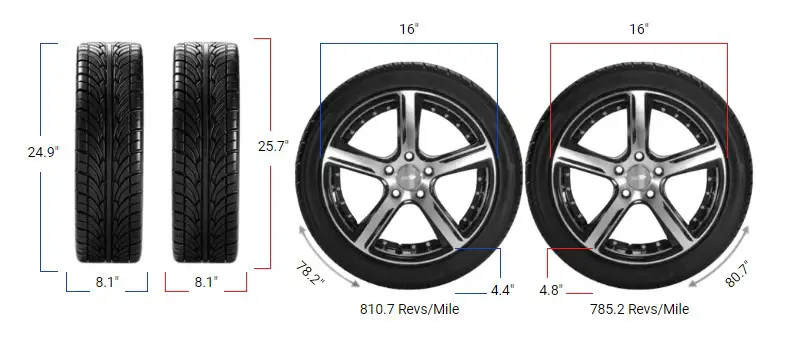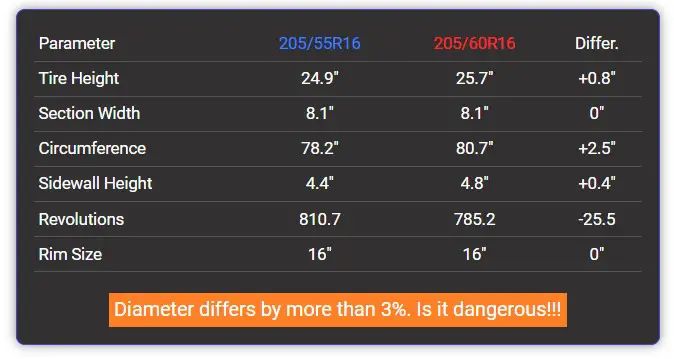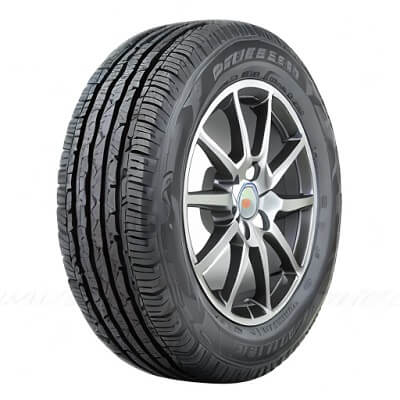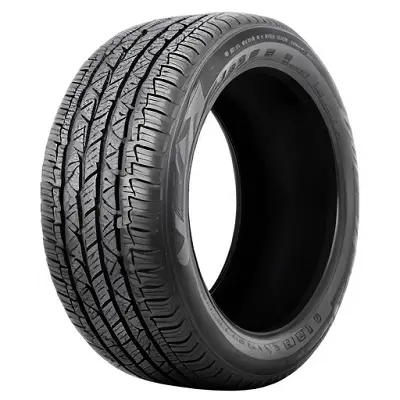Tire Size 205/55r16 vs 205/60r16

The main difference between tire sizes 205/55R16 and 205/60R16 lies in the aspect ratio, which affects ride characteristics, aesthetics, ground clearance, and speedometer accuracy. Let’s compare how these subtle differences impact performance.

Fitment Guide
Both sizes fit the same 16-inch rim diameter, but the 205/60R16 is 3.2% larger in overall diameter. This minor increase stays within the 3% replacement tolerance for most vehicles, so usually, no modifications are needed.

Ground Clearance
With a diameter of 25.69 inches, the 205/60R16 provides 0.81 inches more ground clearance than the 205/55R16 at 24.88 inches. This modest increase improves clearance over obstacles or rough terrain.
However, it also causes a slightly lower speedometer reading on the 205/60R16.
Gas Mileage
The 205/55R16’s more minor contact patch and lower rotational mass improve efficiency and fuel economy compared to the 205/60R16. The larger tire’s increased rolling resistance and weight reduce mpg.
Ride Comfort
While the 205/55R16 may offer a smoother highway ride, the 205/60R16’s taller sidewall cushions bumps better, providing a more comfortable ride on uneven surfaces. The extra sidewall flex absorbs road impacts more effectively.
Aesthetics
Visually, the difference is subtle. The 205/60R16 has a slightly taller sidewall, giving it a modestly “stretched” look compared to the 205/55R16.
This taller profile aesthetic suits some vehicles, like trucks and SUVs, better than an overly low-profile appearance.

Handling & Stability
The shorter sidewall on the 205/55R16 enhances responsiveness and handling precision on the pavement. The taller 205/60R16 sidewall exhibits more flex, reducing handling sharpness slightly. Both deliver responsive, stable handling overall.
Noise & Vibration
With its shorter, stiffer sidewall, the 205/55R16 transmits more road noise and vibration into the cabin. The extra sidewall flex on the 205/60R16 helps isolate noise and vibration. However, the differences are minor – both provide a quiet, smooth ride.
Durability & Wear
The 205/55R16’s shorter sidewall and smaller contact patch may promote more even treadwear and extended lifespan. The larger 205/60R16 sees more stress, which could accelerate wear on the tire and vehicle components.

Adverse Conditions
The narrower 205/55R16 may cut through better to find grip beneath in snow or ice. The wider 205/60R16 provides a traction advantage in specific off-road or muddy conditions. Both perform well overall in adverse weather.
Speedometer Difference
The speedometer reading for 205/55r16 tires at 20 mph is 20 mph. However, for 205/60r16 tires at the same vehicle speed, the speedometer reading is slightly higher at 20.65 mph.
This difference of 0.65 mph is because 205/60r16 tires have a larger diameter, so they cover more ground distance per revolution. Overall, speedometer readings will be slightly higher with 205/60r16 tires compared to 205/55r16 at the same actual vehicle speed.
Can I use 205/55r16 instead of 205/60r16?
The overall diameter of the 205/55r16 tire is 24.88 inches (631.9 mm), while the 205/60r16 tire has an overall diameter of 25.69 inches (652.4 mm).
The difference between these two tire sizes is 0.81 inches or 20.5 mm, representing about a 3.2% difference. This difference slightly exceeds the recommended 3% limit, so using a 205/55r16 tire instead of a 205/60r16 tire might not be advised.
However, it is always best to consult a tire specialist or vehicle professional before making such changes to guarantee safety and performance.
Can I put a 205/55r16 on a 205/60r16?
In terms of fitting a 205/55r16 tire on a rim intended for a 205/60r16, we can look at the rim width ranges. The 205/55r16 tire can accommodate a rim width range of 5.5-7.5 inches.
While the 205/60r16 tire is suitable for a rim width range of 5.5-7.0 inches. Given these ranges, it is possible to mount a 205/55r16 tire on a rim designed for a 205/60r16 tire, as their rim width ranges overlap.
Our Observation
The 205/55R16 offers advantages like sharper handling, potential fuel economy benefits, and a more accurate speedometer. Its shorter sidewall and lighter weight suit performance needs.
Meanwhile, the 205/60R16 provides a smoother ride over imperfections, improved capability through snow or off-road, and a stretched aesthetic some prefer.
For most drivers seeking a comfortable daily tire, we recommend the 205/60R16 for its ride quality and light off-road ability. But opt for the 205/55R16 if handling and fuel efficiency are top priorities. Both remain great options.

Meet Caitlin McCormack, a Tire Size Expert and Blogger Passionate About Everything Related to Tires. With Years of Experience in the Tire Industry, Caitlin Has Become an Expert in Tire Sizes and Their Impact on Vehicle Performance.
